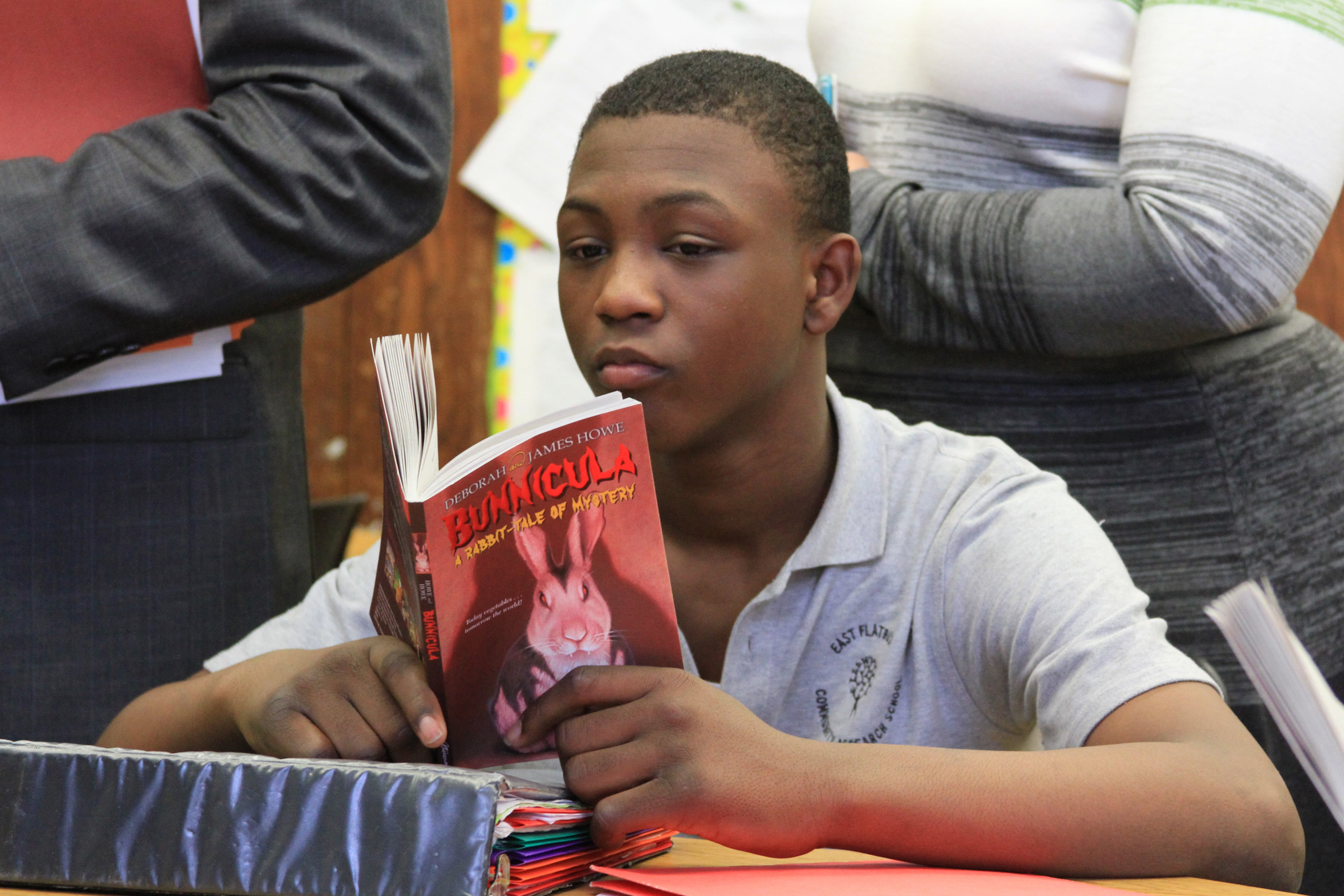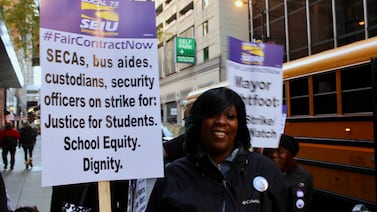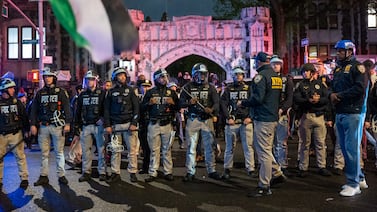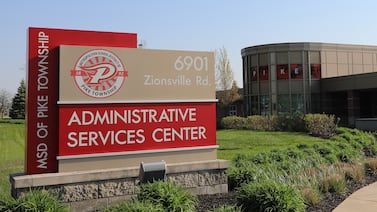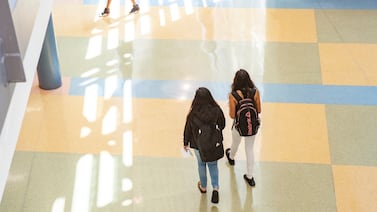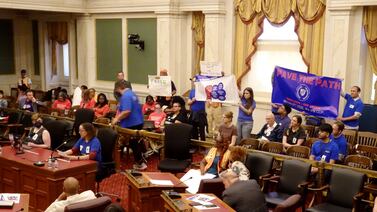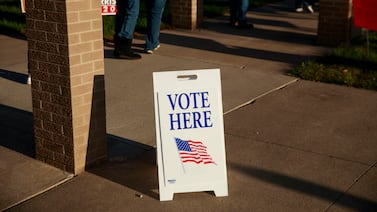Sign up for Chalkbeat New York’s free daily newsletter to keep up with NYC’s public schools.
While New York City’s elementary schools undertake a sweeping shift in their approach to teaching reading, a parallel change is quietly unfolding at many high schools.
High school superintendents across the city are urging, and in some cases mandating, that schools under their supervision adopt standardized English language arts curriculum, according to principals and district officials.
The superintendent-led changes have focused on one curriculum in particular: Houghton Mifflin Harcourt’s Into Literature, the high school extension of the company’s hugely popular elementary Into Reading program.
The secondary school curricular shift, while not as sweeping or coordinated as the changes happening at the elementary school level, could have far-reaching consequences for how literacy and literature are taught across scores of city high schools.
“It’s a huge overhaul,” said one Brooklyn administrator who spoke on the condition of anonymity. The school’s English teachers are “absolutely panicking” at the idea of swapping out books they’ve taught for years and creating lesson plans for a new curriculum in just several weeks’ time, the administrator said.
High schools were not subject to the historic mandate announced last spring that city elementary schools use one of three pre-selected literacy curriculums — an effort to standardize how young students are learning to read and move away from teaching practices that have been increasingly discredited.
An education department spokesperson said there are no plans currently to institute a citywide English curriculum mandate for secondary schools.
Nonetheless, it’s likely that high school superintendents are reacting to the changes unfurling at the elementary level, observers said.
“I think some of them are trying to get ahead of the game,” said one district staffer involved in the curriculum rollout, who spoke anonymously because they’re not authorized to talk to the press. “The writing is on the wall.”
The education department didn’t provide the number of high schools using Into Literature or other packaged curriculum, and a Houghton Mifflin Harcourt spokesperson couldn’t say how many high schools have purchased its product for “competitive reasons.”
But there are signs the shift is widespread.
In the Manhattan High Schools district, Superintendent Gary Beidleman is mandating that schools with high numbers of low-performing freshmen adopt Into Literature for ninth graders this year, according to emails obtained by Chalkbeat. In the Urban Assembly/CUNY high school district, Superintendent Fred Walsh asked schools to choose between Into Literature and two other curriculums, according to principals. Among the 47 high schools in the Brooklyn North district, 20 to 30 are likely to adopt Into Literature this fall, after strong encouragement from Superintendent Janice Ross, according to a source familiar with the district.
Education Department spokesperson Nicole Brownstein said “we are proud of our superintendents for taking proactive steps to address gaps in literacy” and that their efforts are “aligned” with the department’s elementary school initiative.
Experts and educators say there are big potential advantages to standardizing curriculum, including better quality control, a reduced burden on teachers to spend their time creating curriculum, and greater ease for district officials in supporting and monitoring schools.
But curriculum standardization is also fraught with challenges, requiring significant buy in from staff and heavy training both up front and on an ongoing basis.
Multiple educators said the early signs in several districts point to a rocky rollout.
“It’s going be really hard, I’m really worried about that,” said the district staffer involved with the curriculum rollout. “There are all these layers, and it just feels like there’s not a lot of time or resources to support these clear lines of communication that will allow this to be successful.”
NYC has history of curriculum changes
The recent moves under schools Chancellor David Banks toward standardized curriculum are far from the first effort to unify what’s taught across city schools.
Former Chancellor Joel Klein took a famously top-down approach to curriculum, including mandating a remedial literacy curriculum called Ramp Up at hundreds of high schools. Klein’s tenure ushered in the widespread adoption of “balanced literacy” — an approach that Banks is now trying to abandon because it didn’t include enough systematic instruction on the relationship between letters and sounds.
Former Mayor Bill de Blasio’s chancellors turned up the focus on ensuring classroom materials were relevant to students’ backgrounds and interests, an approach known as culturally responsive education. That culminated in the city’s first-ever plan to create a homegrown universal curriculum, a $200 million initiative called Mosaic that struggled to get off the ground and was finally killed under Mayor Eric Adams.
Veterans of the city education department say the current leadership would be wise to heed the lessons of those past rollouts: chief among them the importance of adequate training before and during curriculum adoption.
When Klein introduced Ramp Up, the remedial literacy curriculum, “there was so much front-loading before it ever played out in the classroom,” recalled Vivian Orlen, the former Manhattan high schools superintendent, who was a high school principal when Ramp Up arrived.
The current curricular shifts at the elementary and high school levels mostly outsource training to the publishers, rather than offering it in-house, a move that’s raised some eyebrows among curriculum experts.
“I’ve worked with Houghton Mifflin Harcourt trainers,” said Vicki Madden, a long-time teacher and instructional coach in the city education department who retired last spring. “The trainers invariably do a sort of stand and deliver [training],” or a type of instruction that’s heavy on lectures from the front of the room, and lighter on interactive and group work. “No teachers learn a curriculum package [like that],” Madden added.
Moreover, several educators told Chalkbeat they haven’t yet received any dedicated training on the new curriculum or even had a chance to review the materials, which arrived at schools over the summer.
Kathleen Kantz-Durand, an English teacher at Climate Justice High School in East Harlem, which is shifting to Into Literature under a mandate from its superintendent, said she was hoping to attend a voluntary vendor-led training organized by the district earlier this summer, but didn’t have child care.
“I think this return to really traditional curriculum and texts could be a good thing,” she said. “But…the precious little communication I’ve had about it, the lack of training, worries me that it’s not going to be implemented in a way that will work.”
Kantz-Durand said she was still hoping to attend another optional session before the start of school.
An education department spokesperson said that there are four coaches in the Manhattan superintendent’s office who will work with the 18 schools adopting “evidence-based” English curriculum this year.
The training challenges are compounded by the fact that the new contract between the city and the United Federation of Teachers cuts the weekly required professional development block from 80 to 60 minutes.
Schools weigh pros and cons of new curriculum
Among the biggest changes schools are bracing for with the adoption of Into Reading is the curriculum’s focus on shorter excerpts of texts rather than full books.
“I feel kind of complicated about [that],” said Kantz-Durand. “As a person who loves literature, I would love to see students read full text. There’s a lot of pride and joy…in reading a full book.”
On the other hand, Kantz-Durand acknowledged, reading full novels can sometimes take months, especially when students don’t reliably have access to quiet spaces outside of school where they can read independently. So swapping in shorter texts is a change she might have eventually made anyway.
Into Literature does include suggestions for full books to replace the excerpts, but educators new to the curriculum may not know about that feature, and swapping in full books can require significantly more work for teachers, said a district staffer who’s worked extensively with the curriculum.
Other educators questioned whether the pre-selected texts would speak to their students’ experiences.
“When you’re writing a textbook for the entire United States it’s going to look a little different than if you’re writing for a school in Harlem,” said one Manhattan principal, who spoke on the condition of anonymity.
Houghton Mifflin Harcourt’s elementary school curriculum has received criticism for failing to incorporate a diverse selection of authors, a charge the company denies. One Brooklyn principal told Chalkbeat that Into Literature seemed to have a more diverse set of texts than other curriculums they reviewed.
For some schools, Into Reading won’t be entirely new.
The curriculum, previously called Collections, has been a mainstay for years in the city Education Department, and is currently the only high school English program included on the city’s list of “core curriculum.” That distinction means it’s been vetted by the Education Department and schools can use state textbook grants to buy it, rather than dipping into their general budgets.
Educators who have seen curriculum shifts come and go caution that, however promising a new program is, implementing that at scale is delicate work that can fall apart easily with a haphazard rollout.
“There’s an endless cycle in schools,” said Madden. “People are dissatisfied with kids’ achievement, engagement. People say, ‘We need a new curriculum.’ Within one week of implementation, you’ll hear from people saying, “This isn’t right for our kids, this doesn’t work,” then you have teachers veering off. Some of them will be brilliant, some will not. And then you don’t have shared curriculum at all.”
Alex Zimmerman contributed.
Michael Elsen-Rooney is a reporter for Chalkbeat New York, covering NYC public schools. Contact Michael at melsen-rooney@chalkbeat.org.


